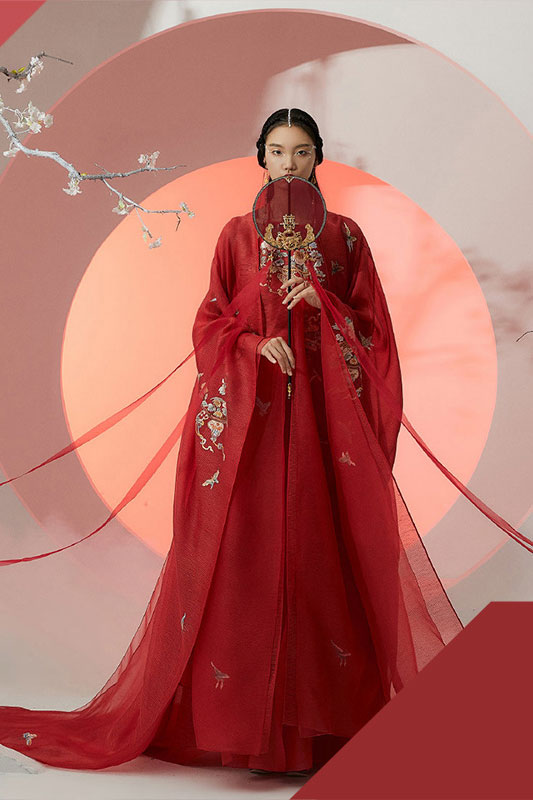Inspiration source - Under the influence and drive of multiple factors, China
has become the most important consumer market in the world. The increasingly
diversified consumer groups and further changes in consumption patterns are also
constantly reshaping the consumer goods industry.
Inspiration events - along with the improvement of China's comprehensive
ability and the deepening of cultural confidence, people's love for traditional
Chinese culture has increased. The recent popularity of the TV series "Dream of
China" shows us the beauty of elegance and tranquility in the Song Dynasty.
After the attention paid to the stage play The Journey of a Legendary Landscape
Painting, it is also loved by young consumers.
Red system -- Chinese red, also known as crimson, is the red of the three
primary colors, and is the most representative color of China. This group of
colors optimizes the traditional Chinese color, which is different from the
traditional palace wall red. This group of red is more stable and bright, bright
but not greasy, full but not overflowing, and can express the atmosphere of the
picture more perfectly!
Black series - In traditional culture, black is also known as "Xuan".
Influenced by the five elements of color and Confucian culture, black has its
unique characteristics and nationality in ancient times. It is reflected in
painting and traditional techniques. It is the most common in traditional
Chinese ink painting. The light, thick, dry and wet color of the ink reflects
various color senses. The light and dark levels of black and white can reflect
the rich color properties.
Blue-green system - blue, known as "green" in ancient times, is one of the
"five positive colors" in the traditional Chinese color system. It is one of the
earliest colors in traditional Chinese dyeing. It refers to the eastern color,
spring color. It has a long history. The dyes used in traditional blue dyeing
are basically made of bluegrass (Malay, Polygonum, Isatis indigotica, and
indigo). This is the allusion of "green is better than blue".
Dark green system - green is one of the traditional Chinese five colors (five
positive colors) and an indispensable part. At the same time, green is the color
of plants, which can represent life and the state of life, while dark green
represents the mature and vicissitudes of life. " In traditional clothing, it is
used on real silk and cotton and hemp to present the feeling of capturing nature
and integrate poetry and painting into color.
Cyan system - Cyan system appeared in blue color in ancient times. Scholars
have a special preference for water and pornography. "The night rain turns the
sky blue, and the sun lends the rouge" is a poem by Yan Shu, which tells the
story of the Southern Tang Dynasty, and the sky blue embellishes the color of
the night sky. It is a touch of light green. "A Dream of Red Mansions" said:
"You wear a light youth jacket and a water-green skirt with 100% discount." The
water-green clothing is mainly women's clothing, which is slightly elegant and
extremely gentle.
Yellow is one of the traditional Chinese colors. Chinese yellow is not only a
symbol of noble dignity, but also the primary color bred by the earth. It is
also a kind of blood and spirit in the bone. In ancient China, the soil was in
the center, which was the orthodox orientation of the center. The color of the
land is yellow, so the ancient Chinese orthodox color. The Sui Dynasty began to
be the exclusive color of the royal aristocracy, and then gradually entered into
daily life until the Republic of China.




